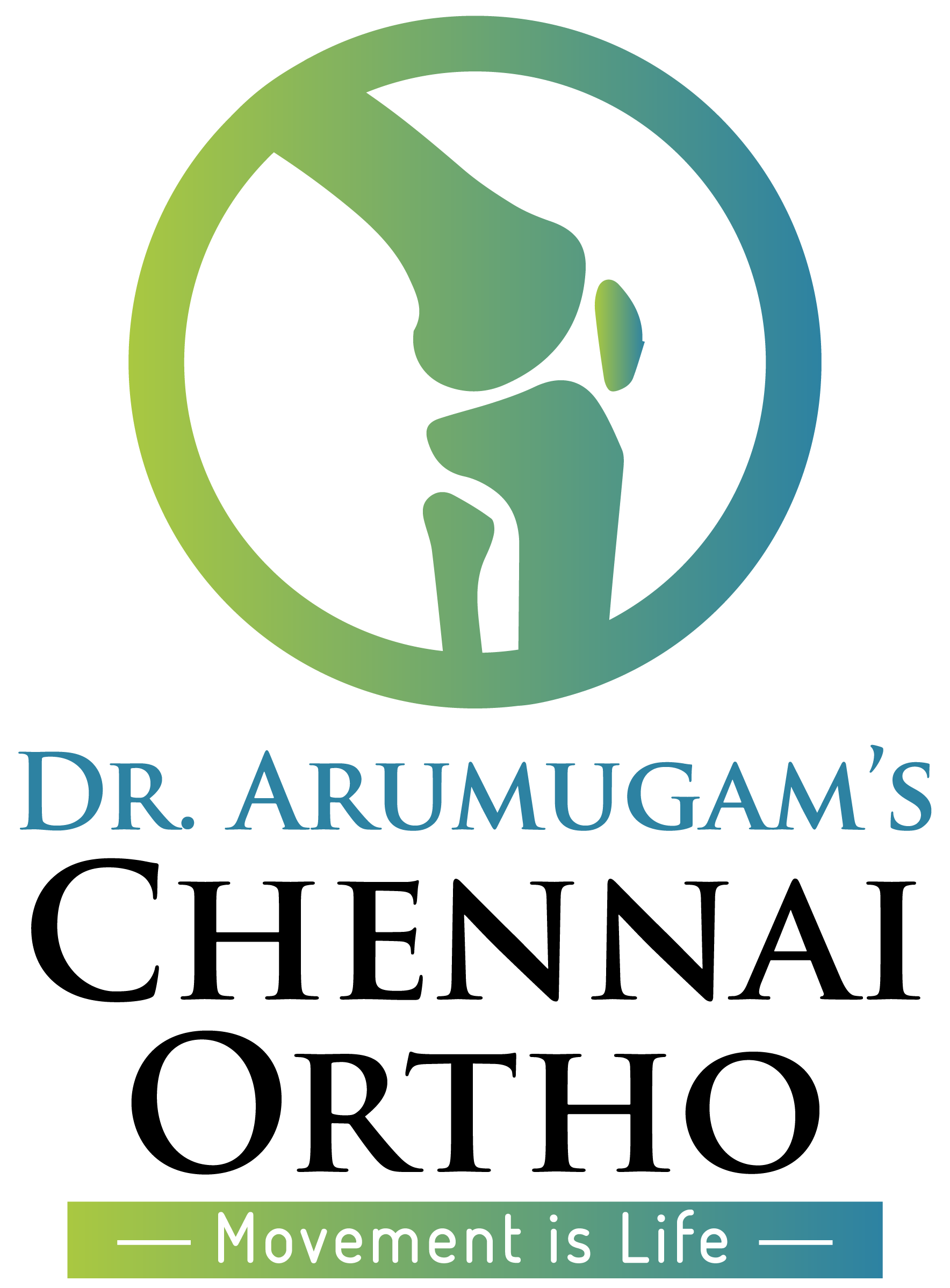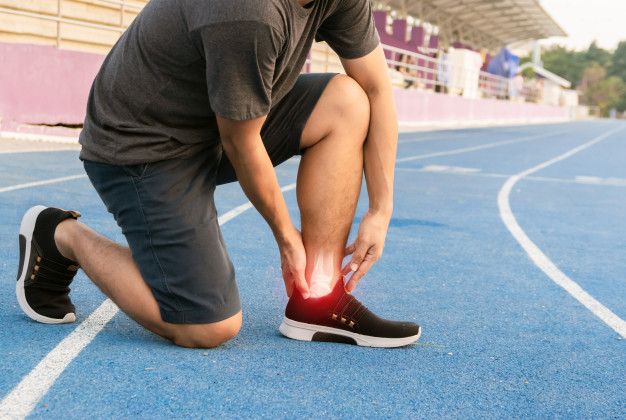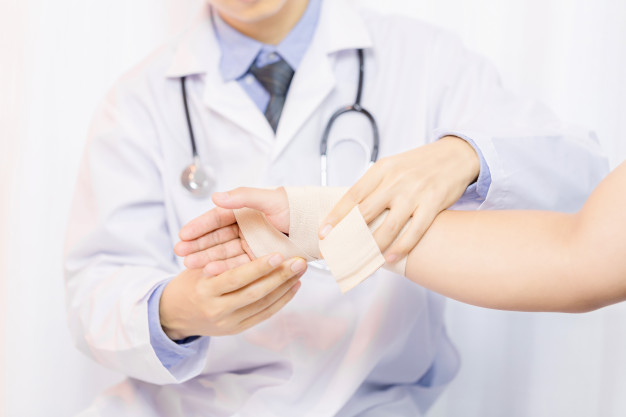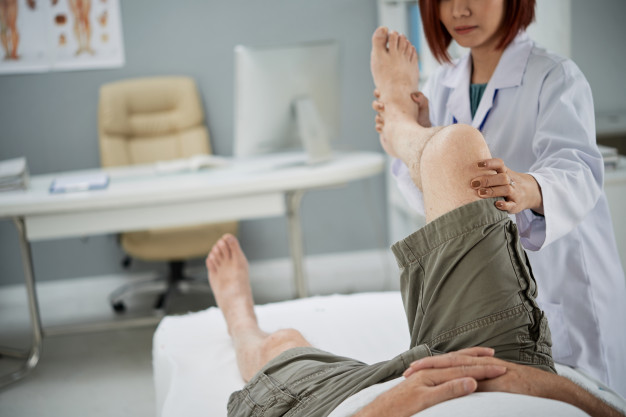Dr. S. Arumugam has operated on more than 3000 patients in his career and helped change the lives of many more. His team of anesthesiologists and nurses are thoroughly equipped to care for patients with hip conditions.
Some of the most common trauma conditions that the doctor deals with on a regular basis are:
- Joint Dislocations
- Fractures
- Sprains
- Strains
Joint Dislocation
What is a joint dislocation?
A joint is a place where two or more bones meet. A dislocation is an injury in which the bones shift from their original position. Dislocations commonly take place in the shoulders and fingers.
If you suspect that your joint has been dislocated, you must seek appropriate medical treatment to make sure your bones are returned to their original positions.
Not getting the requisite aid might damage surrounding blood vessels and nerves and lead to further complications.
When treated properly the bones return to their original positions in a few weeks. But there’s an increased risk of dislocation in some joints like the shoulder joints.
What causes Joint Dislocation?
Joint dislocation is caused when bones are knocked out of place due to an impact.
This can occur during falls or impacts that come as a result of playing a contact sport. Children are at a higher risk for joint dislocation especially when they play sports unsupervised.
Elderly people are also at a risk for joint dislocation if they cannot move much and are not able to prevent falls.
What are the symptoms of joint dislocation?
- Your joint is visibly deformed and out of place.
- There is swelling and extreme discoloration in your joints
- Your joints hurt badly
- You can’t move your joints.
How is Joint Dislocation Diagnosed?
How is Joint Dislocation treated?
A joint dislocation is treated according to its severity. If the joint dislocation is mild you’ll have to practice the Rest, Ice, Compression, Elevation technique.
If the joint dislocation is severe, your doctor will manually return the bone to the original position or ask you to wear your leg in a splint, cast or a sling for several weeks.
They might also prescribe a painkiller or muscle relaxant if your pain is severe.
Fracture
What is a fracture?
When there is a thin crack or a break in the bone, a fracture is said to have occurred. A fracture can either be caused due to an accident or injury or because of diseases that weaken the bone.
Fractures caused due to other diseases are called pathological fractures.
A fracture is characterized by immense pain and loss of joint functionality depending on where it takes place.
The bone is simply set in place again using a splint or cast.
There are different kinds of fractures:
Stable fracture: In this type of fracture the ends of the bones are lined up in place and are not out of place.
Compound fracture: The skin is ruptured because the broken bone pierces through it. Here the bone may or may not be visible in the wound.
Transverse fracture: The bone is broken horizontally.
Oblique fracture: The bone is broken at an angle.
Comminuted fracture: The bone shatters into three or more pieces.
What are the symptoms of a fracture?
- Extreme pain, swelling, and bruising in the fractured area.
- Discolouration
- The patient cannot put any weight on the affected area.
- The patient feels as though his bones are grating against each other.
- There may be bleeding if the fracture is compound.
What causes a Fracture?
A fracture is mostly caused due to falling or accidents. As we age, we tend to lose the strength in our bones and become more prone to fractures.
Hyperactive children who are more involved in physical activities are also more prone to fracture.
People who are suffering from other conditions like osteoporosis and tumours also have a high risk for fractures.
Frequent use of bones can also cause stress fractures because of the repeated loading and unloading of bones.
How is a Fracture Diagnosed?
The doctor will conduct a physical examination and ask for eyewitness accounts to determine how the fracture took place.
They might also order imaging tests like X-rays, MRI, and CT scans to determine the severity of the fracture and also determine if any of the surrounding organs/tissues are affected.
Sprains
What are Sprains?
Our bones and joints are connected and held together with the help of fibrous tissues called ligaments.
These ligaments are elastic, but when they’re stretched too much during an activity, they tend to tear or stretch abnormally. This is called a sprain.
Although it’s possible to sprain any part of the body with a joint, sprains most commonly occur in ankles. Other common areas include the neck, shoulder, wrists, and hip.
Sprains in the neck are common during car accidents. The body is held in place by seatbelts while the head jerks forward in a “whiplash” movement.
Sprains can either be caused due to repetitive physical activity or overuse of the ligament in a single time.
Doctors grade sprains according to their severity. A grade III sprain is most severe and means that the ligament has been torn or damaged completely.
Sprains are resolved with time, but your doctor might recommend physical therapy and surgery if the injury is too severe.
What are the Symptoms of a Sprain?
Symptoms of a sprain include:
- Pain
- Swelling
- Bruising
- Hearing a pop noise when the injury takes place
- Difficulty in moving the affected area without experiencing pain.
What Causes a Sprain?
A joint is made up of two or more bones. The bones are held together and prevented from moving in odd directions by fibrous tissue called ligaments.
Some joints can move in multiple directions, and they need numerous ligaments to move and align properly.
When the body is put under stressful physical conditions that stretch the ligaments beyond their limit, a sprain is caused.
The sprain can take place as a result of repeated physical activity like contact sports or as a result of a single-time injury.
How is Sprain Diagnosed?
You might also be required to take an X-ray or MRI to help your doctor learn the extent of your injuries.

Strain
What is a Strain?
Our bones are connected using fibrous tissue called ligaments, while our bones and muscles are held together by connective tissue called tendons.
When these tendons or the muscles themselves are injured because of strenuous physical activity, they are called strains.
Strains can also be caused due to fatigue, overuse, or improper use of muscles and tendons during physical activity.
Muscle strains are graded from mild to severe, depending on the extent of the injury. Grade 1 strains are mild, while Grade 3 strains are severe and involve complete tearing of muscles and tendons.
Strains can take place in any muscle, but they are most common in the lower back, neck, shoulder, and hamstring muscles.
What are the symptoms of a strain?
- Muscle weakness and tenderness
- Muscle cramp in the affected area.
- Cannot move the affected joint too much.
- You cannot put much weight on the joint
- A popping sound at the time of injury
What are the Causes of a Muscle Strain?
Muscle strains are caused when:
- You don’t warm up properly before physical activity
- Your muscles are fatigued.
- You lift something heavy in an unusual position
- You maintain poor posture while sitting.
- The weather is cold and the warm-up isn’t sufficient.

How are Strains Treated?
Most strains can be treated at home using the RICE (Rest, Ice, Compression, Elevation) method.
You can treat the affected area with heat after three days to improve the blood circulation in the area and promote healing.
If the pain is too severe, your doctor might prescribe anti-inflammatory medicines and painkillers to get rid of the pain.
And once the pain is bearable, start with light stretching and begin increasing the level of your physical activity to keep your body in shape.
In very severe cases, your doctor might prescribe surgery and physical therapy.








